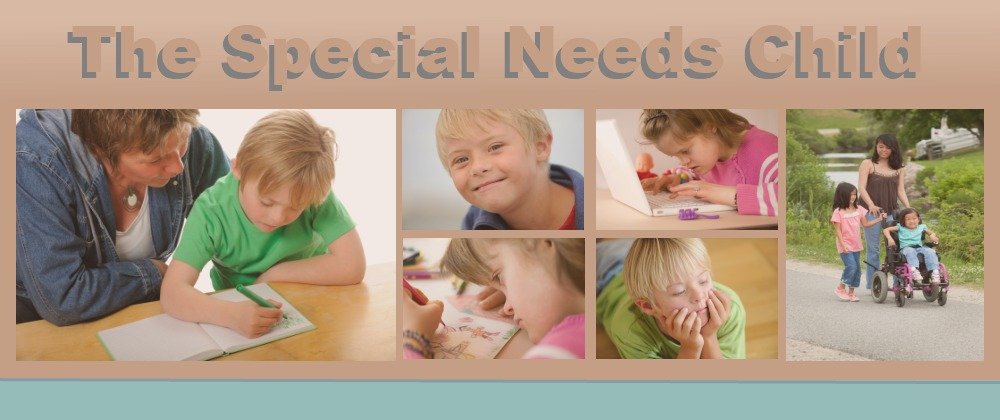|
USING THE TIME-OUT DISCIPLINE TECHNIQUE
FOR SPECIAL NEEDS CHILDREN
 The time-out discipline technique can be very effective because, wether we like it or not, every child is naughty at some time
(some children seem to be naughty all the time!) and it is at those times
that parents face their greatest challenge.
The time-out discipline technique can be very effective because, wether we like it or not, every child is naughty at some time
(some children seem to be naughty all the time!) and it is at those times
that parents face their greatest challenge.
It is a huge task to get your childs behaviour under control while remaining calm in the process.
In the past spanking and shouting at your child was regarded as a suitable punishment, but many parents and professionals believe that such drastic
measures are no longer suitable and the time-out discipline technique can be very effective when used correctly.
Using the time-out discipline technique can be very effective in improving your child's behaviour and you will feel much better about yourself too, compared
to the post-discipline guilt which usually accompany the spanking and shouting approach.
The basic idea of a time-out is to keep the child isolated for a time to allow your child to calm down, learn to cope with no attention and
most importantly to learn that there are consequences for bad behaviour.
The added benefit of the time-out technique is that it also gives you a time to calm down from the anger and not to handle the situation
when you are stressed out and emotional. You can now figure out a plan of action for when the time-out session is over.
The time-out discipline technique is not only for toddlers, but can be used for older children too, and you will know when your child has outgrown
this discipline technique and it stops working for you.
As your child gets older, or if you are introducing this technique to an older child, make sure that you explain in detail and also write down
what types of
behaviour
will result in a time-out. For younger children you can do a chart, with pictures of inappropriate behaviour, and explain to them,
with the visual aid what is not accepted and what will happen if they behave in this way.
APPLYING THE TIME-OUT DISCIPLINE TECHNIQUE
 Firstly, when implementing time-out, no arguing is allowed!
Firstly, when implementing time-out, no arguing is allowed!
A time-out is exactly for the purpose of allowing a calm discussion to follow a period of quiet time, and not to get into an argument.
Be careful not to over use this technique with your child. It is a mild form of discipline, and will loose its effectiveness if you over use it.
However, if this system is working for you and your child, then their behaviour should be improving and time-out sessions will become less necessary.
Try the following steps to introduce effective time-out sessions:
- Be consistent. When implementing the time-out discipline technique, make sure that your child's caregivers and school are also aware the rules warranting
a time-out and try to enforce this fairly and consistently. All adults involved in your child's life should use the same of rules when dealing with your child,
as consistency is critical to your child's understanding.
- Find a corner or "quiet and boring" spot where your child can either sit or stand during time-out. Never use there bed or their bedroom, or any
place that they can entertain themselves; it is time for reflection and not for fun.
- Determine the period of time by age: Generally time-out is set at around one minute per year of age, but is doubled if your child does comply with
the rules or continues to misbehave. Keep track of the time with a timer, and put the timer where your child can see it. When explaining the rules
warranting a time-out, also explain to them how the timer will work and how it fits into the discipline session. This visual aid will help them to understand
when the time is up and take the unknown out of how long the punishment will last. This is very important, especially with a special needs child.
- Before implementing the time-out discipline, you can issue a verbal warning first, but only once. This will give your child a chance to make a choice
about changing their behaviour before discipline is required. A good technique for a warning is (counting to 10).Never count to three with a special needs child,
this does not give them enough time to change their behaviour.
Once you reach ten and they still have not made any effort to stop what they are doing, this is where you explain to them why they are having a time-out,
and you take them by the hand and put them in the (time-out spot).
- It is very important to reinforce the reason for the discipline, especially for special needs children. Once the time-out session is over, go down
to your child's level, make eye contact and ask you child to tell you why they had a time-out. If they cannot explain to why, then you let them know
what they did and why the behaviour was not acceptable to you. This is also where your child needs to apologise to you for the way they have behaved.
- Don't bring up the incident again. Once the punishment is over, move on from the incident and avoid any more discussions or arguments about what has happened.
The issue has been dealt with, you have both learnt from it, so leave it and move on.
- The final step is to enforce positive behaviour. After the time-out session take your child away from the area and engage them in an activity.
This will allow them to see that the incident is over, and you are not still angry with them. Praise your child for his efforts and enforce positive
behaviour. This will teach your child the correct way to behave, and they will soon learn that this kind of behaviour will get them a lot further and create
a better environment, than misbehaving and tantrums ever will.
ALTERNATE METHODS
 Some parents are still in favour of spanking their children, and feel that this is a more direct form of discipline and believe that time-outs are
ineffective.
Some parents are still in favour of spanking their children, and feel that this is a more direct form of discipline and believe that time-outs are
ineffective.
Others believe time-out allows the child to think about what they did, and the spanking is the actual punishment; and will use the two methods of
discipline
together.
It is important to keep in mind that discipline is about teaching your child good behaviour and no disciplinary technique should
be used without your child understanding why the behaviour was unacceptable, why they are being punished and what is expected of them.
Return from Time-out discipline back to Home page
Return from Time-out discipline back to Special needs discipline
Before disciplining/
Public meltdowns/
Public tantrums/
Time-out spots/
Give yourself a time-out
|



 The time-out discipline technique can be very effective because, wether we like it or not, every child is naughty at some time
(some children seem to be naughty all the time!) and it is at those times
that parents face their greatest challenge.
The time-out discipline technique can be very effective because, wether we like it or not, every child is naughty at some time
(some children seem to be naughty all the time!) and it is at those times
that parents face their greatest challenge.
 Firstly, when implementing time-out, no arguing is allowed!
Firstly, when implementing time-out, no arguing is allowed!
 Some parents are still in favour of spanking their children, and feel that this is a more direct form of discipline and believe that time-outs are
ineffective.
Some parents are still in favour of spanking their children, and feel that this is a more direct form of discipline and believe that time-outs are
ineffective.




